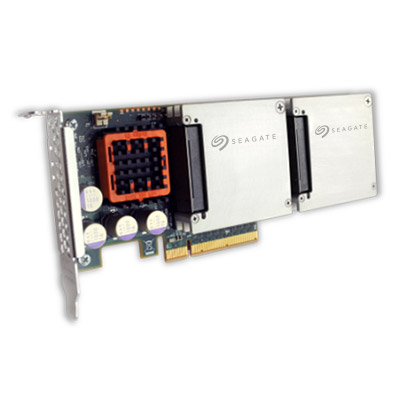 If anyone has been in the storage industry for a number of years, we can all agree that there was so much hype about PCIe taking over the SSD world! Since around 2012 you couldn’t be at a trade show or meeting without having to hear ‘isn’t PCIe going to kill off SATA or SAS in the enterprise SSD market over the next couple of years?’ It quickly became a discussion of how the merits of PCIe are better than the other interfaces, especially when it comes to performance, enabling PCIe to become the dominant interface. There is no argument over the merits of PCIe and how it outperforms other interfaces. But let’s be realistic… at the time (4+ years ago), no one was really addressing the areas of vendor pricing (it was higher than SAS or SATA), proprietary vs. standardization (think NVMe), accessibility (edge cards vs. U.2), hot plug-ability, continuity of supply (can I get two suppliers with like products), and then other things such as qualification cycles, system company expertise to handle this new protocol, and SSD vendors who were not ready or willing to push PCIe as an offering (at the expense of their existing SSD offerings like SATA SSDs).
If anyone has been in the storage industry for a number of years, we can all agree that there was so much hype about PCIe taking over the SSD world! Since around 2012 you couldn’t be at a trade show or meeting without having to hear ‘isn’t PCIe going to kill off SATA or SAS in the enterprise SSD market over the next couple of years?’ It quickly became a discussion of how the merits of PCIe are better than the other interfaces, especially when it comes to performance, enabling PCIe to become the dominant interface. There is no argument over the merits of PCIe and how it outperforms other interfaces. But let’s be realistic… at the time (4+ years ago), no one was really addressing the areas of vendor pricing (it was higher than SAS or SATA), proprietary vs. standardization (think NVMe), accessibility (edge cards vs. U.2), hot plug-ability, continuity of supply (can I get two suppliers with like products), and then other things such as qualification cycles, system company expertise to handle this new protocol, and SSD vendors who were not ready or willing to push PCIe as an offering (at the expense of their existing SSD offerings like SATA SSDs).
Here we are in 2016. When I think of the markets that can help drive adoption of new technologies and consume increased numbers of SSDs, I like to think of two distinct segments (as many of us do) – System OEMs and hyperscale. System OEM companies buy storage devices, like SSDs, and integrate them into servers or storage systems. These companies then sell those systems to the end market (like Wall Street, government, etc….) and systems are priced according to the technologies and performance offered. The highest performing system usually corresponds to having the highest available performance SSDs in the market (like PCIe SSDs). The lowest priced systems will probably have much lower performance, and correspond to HDDs being integrated into them. There are also multiple offerings in between these two end points – being integrated with faster HDDs, SATA SSDs, SAS SSDs, or a combination of these different offerings. They are priced to what the market will tolerate – higher than the lowest performance system, and lower than the highest performing system.
For hyperscale companies that utilize commodity hardware and customized software, there are no systems to sell to the end markets (like Wall Street). Hyperscale companies are offering services and/or storage. If SSD vendors make the business decision to offer PCIe SSDs at the same exact price at SATA SSDs to these hyperscale companies, these companies can choose to take this new solution and integrate it into their datacenters. They are not worried about specific hardware configurations that they need to sell to the end market at different price bands. This is the market where PCIe SSDs can gain traction. If hyperscale companies have viable PCIe offerings from multiple SSD vendors, and it is priced the same as current SATA SSD solutions (or very close to it), why wouldn’t they take the higher performing SSDs? Key features are now being offered to help drive adoption, such as NVMe for standardization of drivers, M.2 to leverage the volume of client solutions, U.2 for serviceability, and if they choose, add-in-cards for the highest capacity solutions.
What drove the adoption of 3.5” and 2.5” HDDs, as well as 2.5” SATA and SAS SSDs, is now becoming a reality for PCIe SSDs. No longer does a company need to worry about betting all their requirements to one vendor, with a proprietary solution, at a much higher price point than their existing storage devices.
The future is bright for PCIe!
—
Don Jeanette is vice president at industry analyst TRENDFOCUS, leads the firm’s NAND/SSD work and is a major contributor to its Cloud, Hyperscale, & Enterprise and HDD programs.







